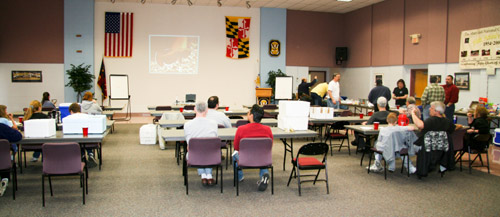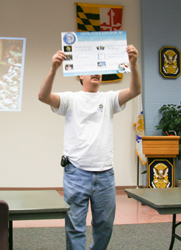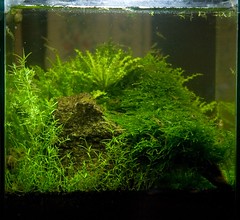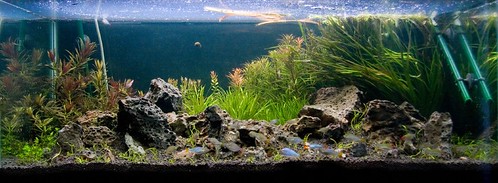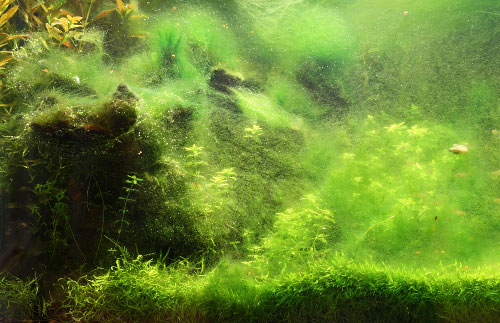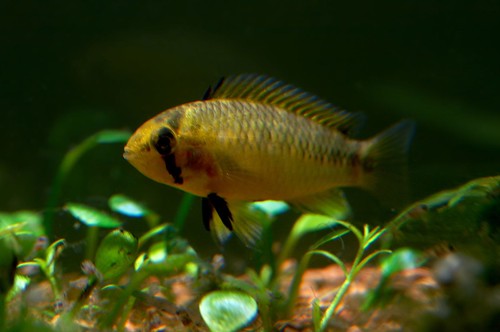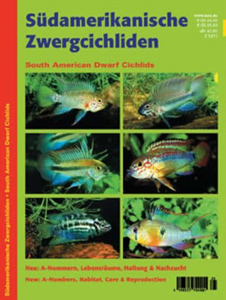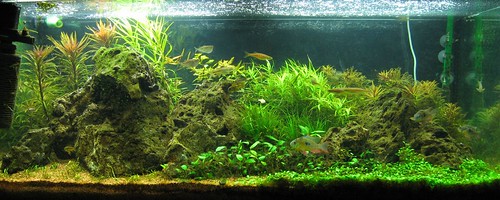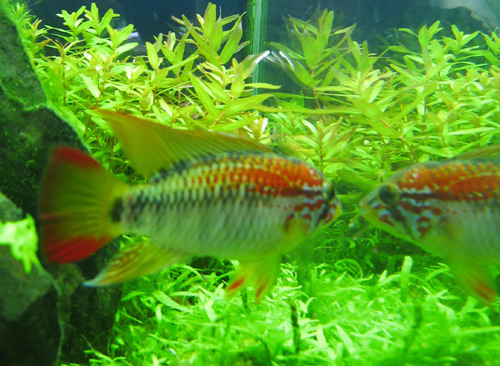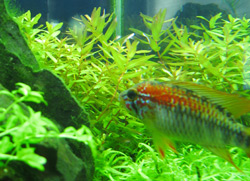Aquasoil Woes…
May 11th, 2007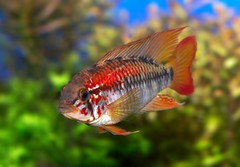 RIP apistogramma viejit |
As posted a couple days ago, I rescaped my 20G high tank with some fresh Amazonia aquasoil and manzanita wood. I’ve rescaped a number of tanks in the past with aquasoil, and I’ll usually add the soil, plant and scape the tank, fill with water, allow to cycle for a few hours, and then add in the fish. Most times, the filters are preexisting, or some of the plants/hardscape come from other tanks, so the biological filter should be largely pre-established. I’ve never had any problems with fish loss using this method.
Now I’ve read and heard about other folks experiences about how new aquasoil temporarily causes the pH to crash. Since my methods above have always worked, I’ve never paid them much heed. True, the pH does drop, but never to an extreme degree that the fish couldn’t adjust to. So, with this 20G setup, I followed my same methodologies. I removed the apistogramma viejitas that were in there, placed them in a bucket with airstone, and proceeded with the change. A few hours after setup, I moved the apistogramma back into the tank. I was actually hoping that the pH would drop down a fair amount and induce spawning since I haven’t been able to get them to breed at a 6.5 CO2 induced pH. They seemed happy enough that night. Morning came, and they were still swimming around, not looking distressed. Then, I get home from work, and one is on the floor, and the other is upside-down in the tank. What changed?
Well, I’m not sure. This is the first tank I’ve setup with fresh wood in a long time. Is it possible that the tannins from the new manzanita dropped the pH further in conjunction with the aquasoil-induced drop? I don’t know. In any case, I think I’ll let my fish spend an extra day or two in an aerated/filtered bucket next time I redo a tank with aquasoil. Rest in peace apistogramma viejita.
